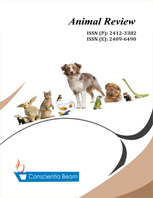The Domestic Livestock Resources of Turkey: Social Aspects, Genetic Resources and Conservation of Companion Animal Cats (Felis Catus)
DOI:
https://doi.org/10.18488/journal.ar/2016.3.4/101.4.83.90Abstract
Located at the boundaries of Europe and Asia, Turkey is home to an extraordinary variety of domestic animal species and breeds that include bees, camels, cats, cattle, dogs, domestic fowl, donkeys, ducks, goats, geese, horses, mules, pigs, rabbits, sheep, silkworms, water buffalo and several species of domestic birds (partridge, pheasant, pigeon and ostrich). In addition to the clearly distinct Angora and Van cat breeds a short-haired nondescript cat breed is found throughout Turkey. As well as private household ownership, Angora cats have been raised at Ankara Zoo which has belonged to the Ministry of Food, Agriculture and Livestock since 1939. The Van cat is raised at the Van Cat Research Centre at Yuzuncu Yil University in Van Province which also has a small clinic for the cats. There is a risk of extinction for the Angora and Van breeds but none for the short-haired nondescript type. This paper reviews social aspects, the genetic resources and conservation status of the native cat breeds of Turkey.

